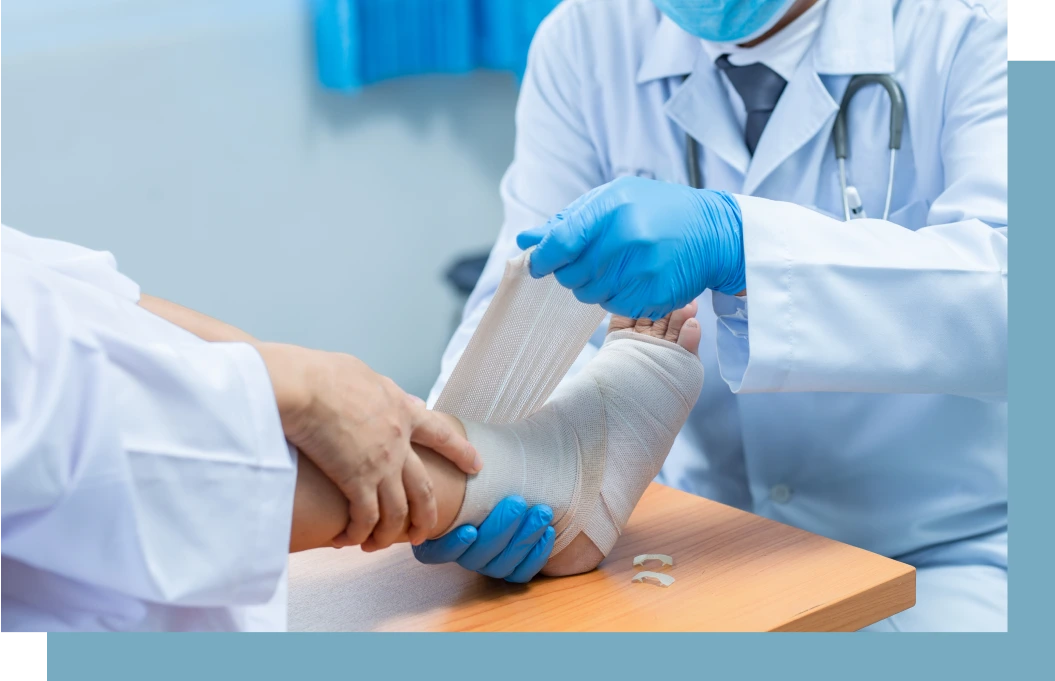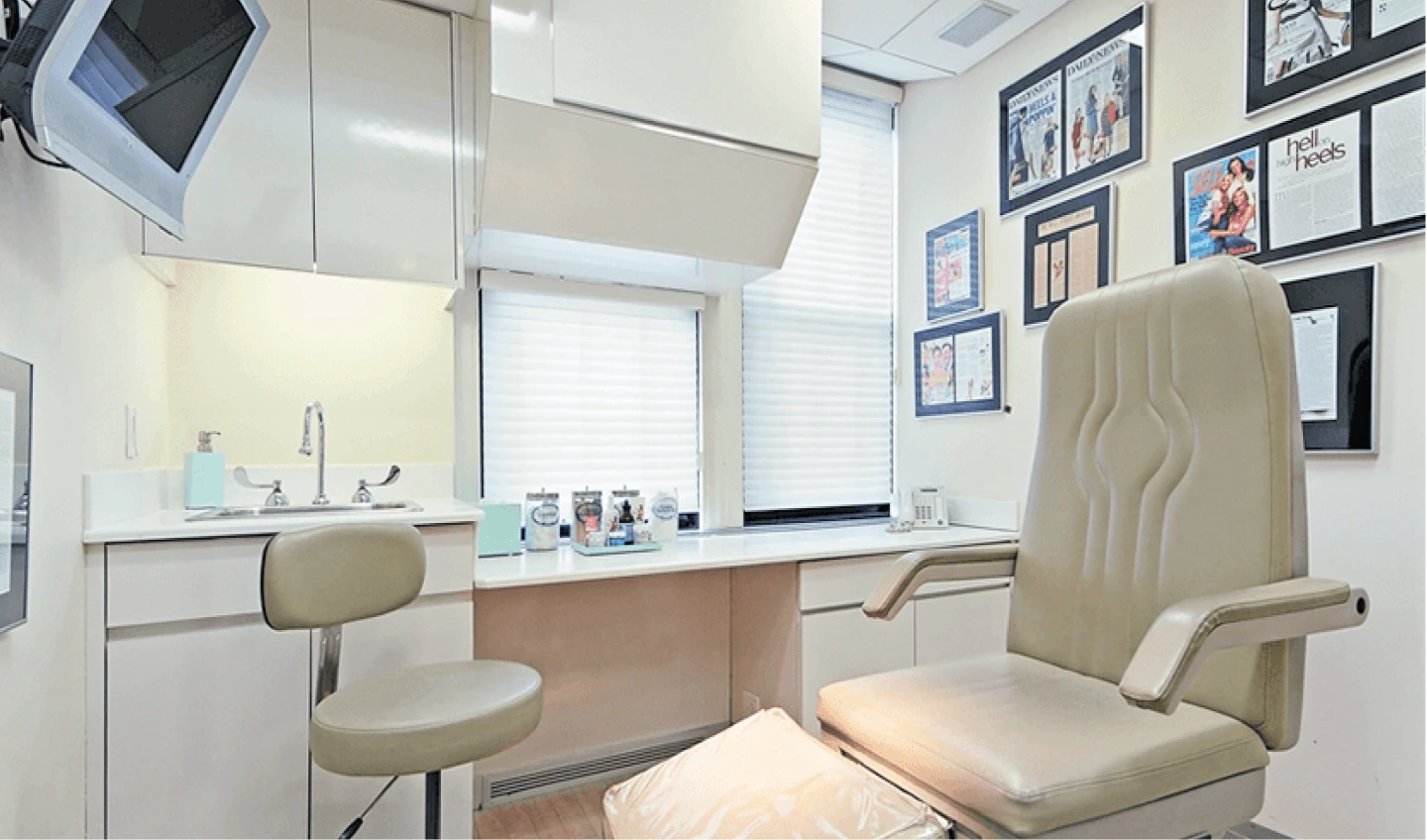
An ankle fracture is basically what we call a “broken ankle.” This means that one or more of the ankle bones are broken. Two leg bones (the tibia and fibula) and one foot bone (the talus) form the ankle. The most common type of ankle fracture is when the bone on the outside of the ankle (fibula) breaks. When a fracture occurs, the stability of the bones may be compromised, and the ankle may shift. This state is called “fracture dislocation” and may cause much more serious issues that need to be treated.
Most ankle fractures occur following an acute twisting injury, where the foot is planted on the ground, and the body rotates around it. Inversion injuries are also common, where the foot turns inward on the leg and fractures the outside ankle bone. Additional causes are slips, falls (especially when landing on one’s foot), and poor bone state.

The type of ankle fracture treatment depends on the involved bone(s), fracture orientation, displacement, separation of the bones, the extent of damage, and the fracture’s/ankle’s stability. Here are the main options:
Stable ankle fractures can be treated without surgery by limiting activity until the bone has healed. Foot immobilization may be achieved by using either a boot or cast with (or without) crutches, depending on the severity of the fracture.
The basis for ankle fracture surgery is to manually place the broken bone(s) in proper alignment. Afterwards, while bone healing takes place, we stabilize the fractured bones, often with screws and plates. The location and orientation of the fracture generally determine the method and type of fixation used to stabilize the bone. Most unstable ankle fractures benefit from surgery to address the problem and ensure that the joint heals in an anatomical position.
With or without surgery, broken bones take 6 to 8 weeks to mend.
Your first visit starts with a consultation, during which our doctor will ask how the injury occurred and will assess your symptoms. A physical examination of the injured area helps determine the extent of swelling, bruising, and range of motion. This hands-on assessment is key to forming an expert diagnosis.

Proper treatment following an ankle fracture can significantly improve long-term mobility and overall joint health. Addressing the injury promptly helps support a smoother recovery process and minimizes complications. The following are some of the key benefits of seeking timely care:



“Dr. Suzanne Levine and her team are the best! I had a bad infection on my toe that looked dreadful. Dr. Levine treated it with a laser that was gentle, quick, and effective. After two treatments, my toe looked 100% better! I would definitely trust them with any foot issues in the future”
– Jeffrey Greenstein / Nov 17, 2020
“Dr Levine and her staff are gracious and professional during each step of the surgical process. From diagnosis to recovery their professional attentiveness to my comfort and wellbeing is a great relief. I highly recommend Dr. Levine her knowledge and skills are unsurpassed!”
“Dr. Suzanne Levine and her team are the best! I had a bad infection on my toe that looked dreadful. Dr. Levine treated it with a laser that was gentle, quick, and effective. After two treatments, my toe looked 100% better! I would definitely trust them with any foot issues in the future.”
“Dr. Levine and her team are real top professionals in the field of podiatry. I came here because of a misdiagnosed foot problem. Dr Levine identified the issue immediately. Also the office is state of the art and supper efficient!”
“Dr. Suzanne Levine and her team are the best! I had a bad infection on my toe that looked dreadful. Dr. Levine treated it with a laser that was gentle, quick, and effective. After two treatments, my toe looked 100% better! I would definitely trust them with any foot issues in the future”
“Dr. Suzanne Levine and her team are the best! I had a bad infection on my toe that looked dreadful. Dr. Levine treated it with a laser that was gentle, quick, and effective. After two treatments, my toe looked 100% better! I would definitely trust them with any foot issues in the future”